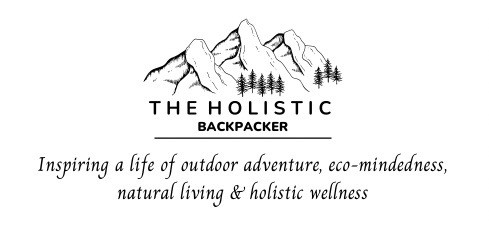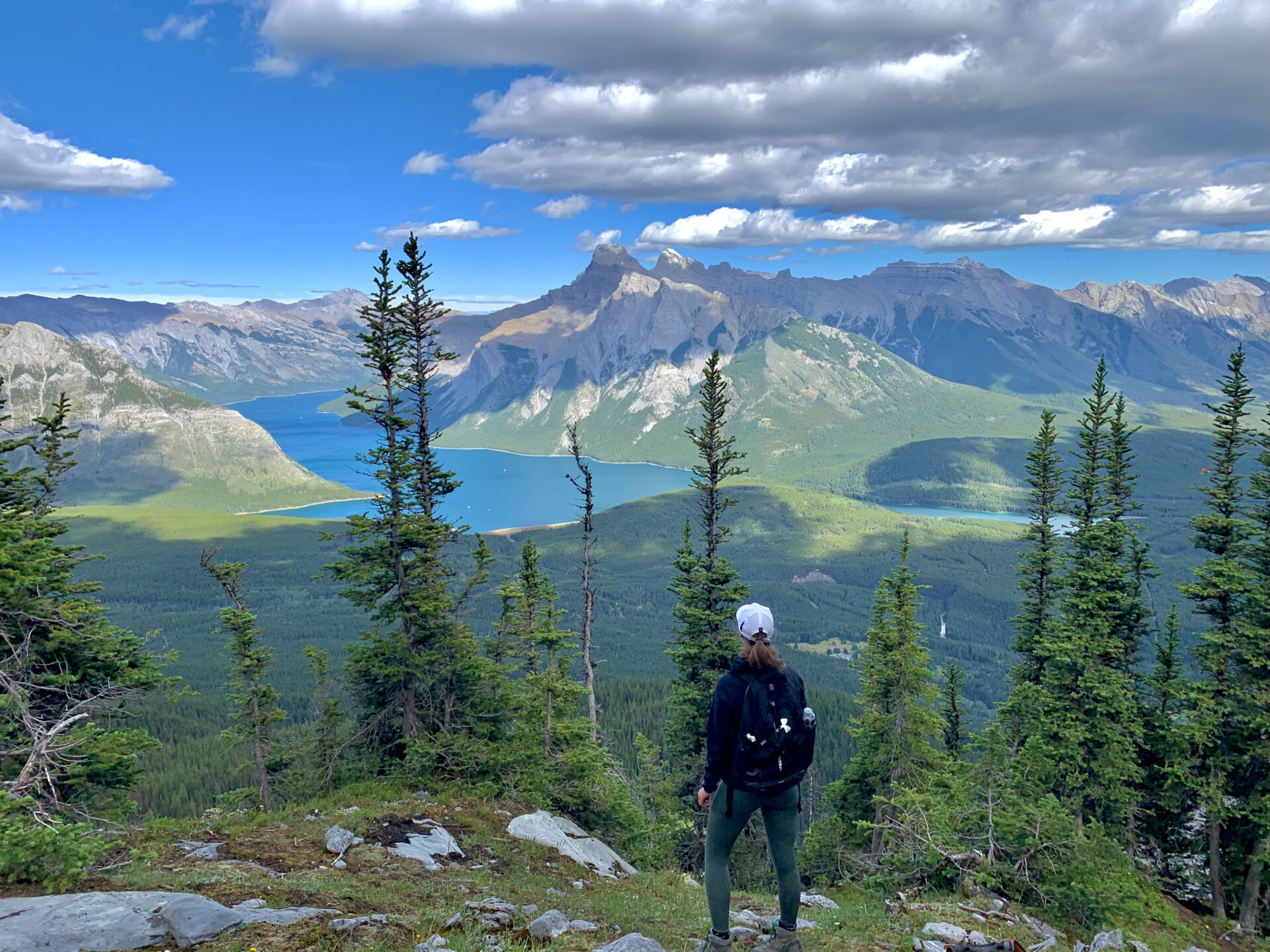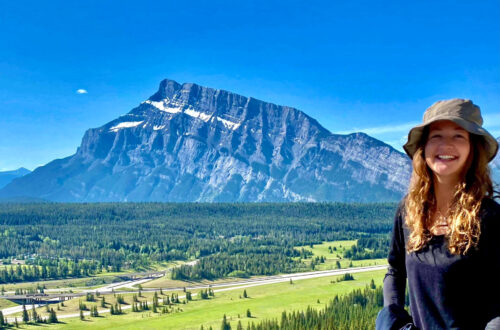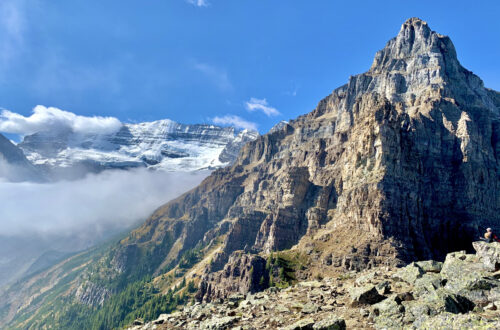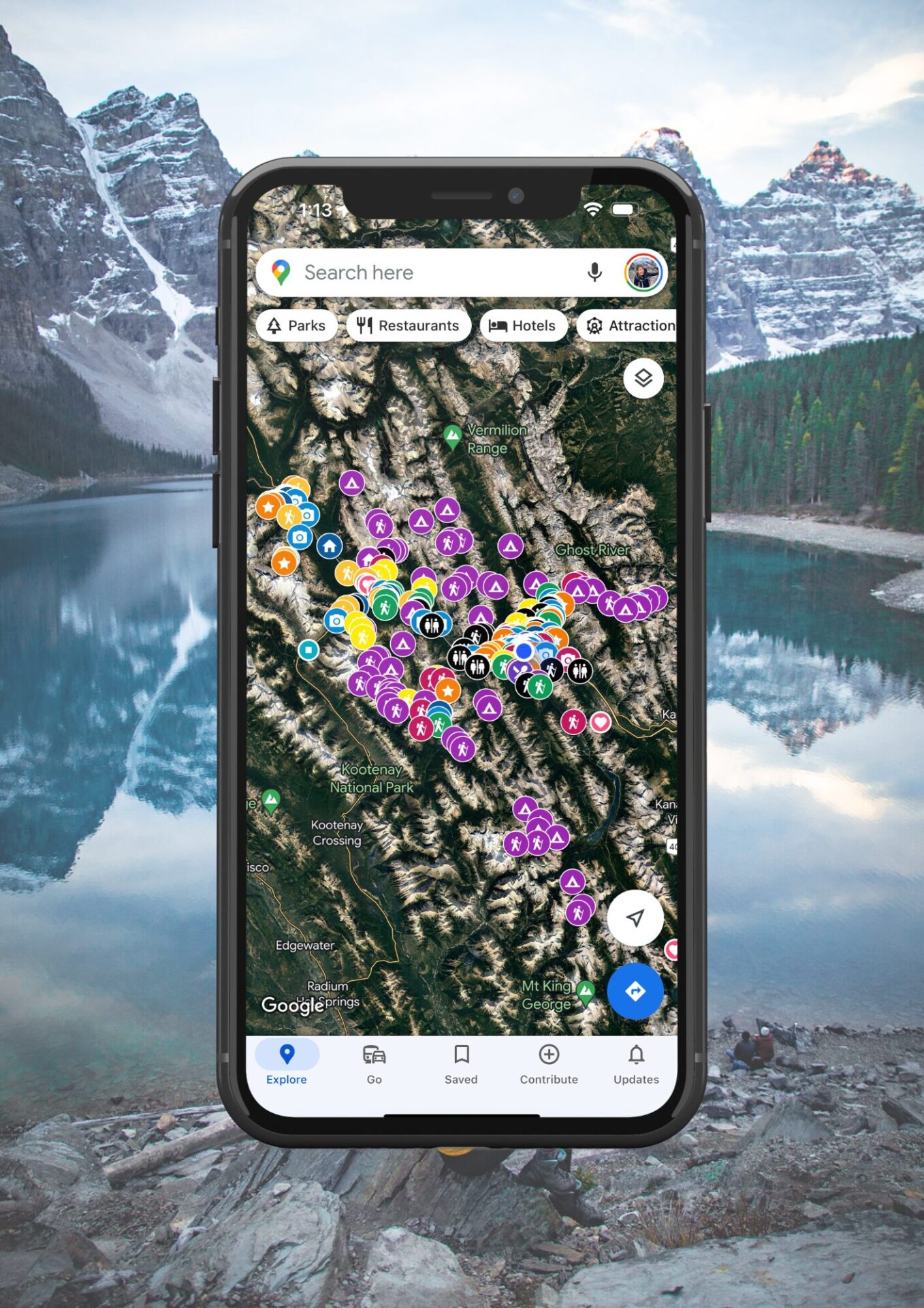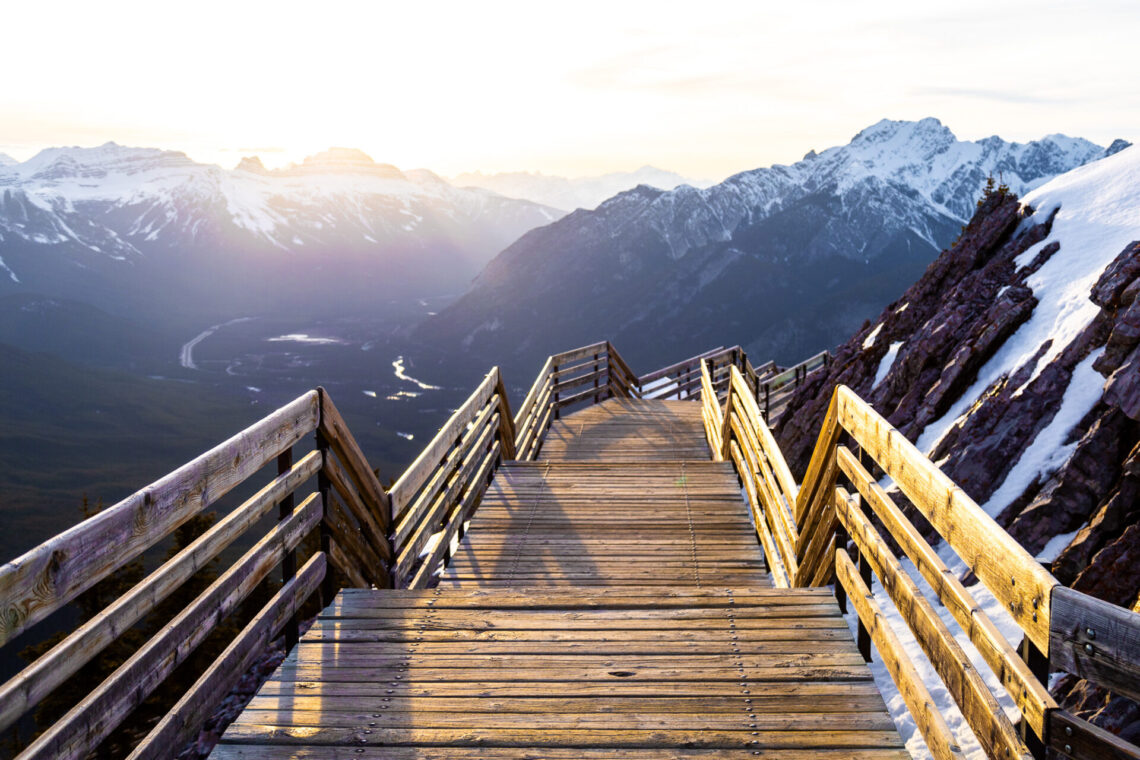
Sulphur Mountain Hike Guide + Gondola Information (Banff)
The Sulphur Mountain hike is one of Banff’s most beloved trails. The summit offers epic 360 degree views of the town and surrounding valleys, plus it’s accessible via hiking and a gondola.
I worked at the Banff Gondola the summer of 2020 which meant I was stationed at the summit 5 days a week. I used to hike the mountain before work so I’m quite familiar with the trail. In this blog post I’ll tell you everything you need to know about the Sulphur Mountain hike from a local’s perspective.
I’ll first go over important hiking information for Banff, where to stay in Banff, gondola information, hiking gear recommendations, followed up with stats for the Sulphur Mountain hike.
Skip Ahead:
- How to get to Sulphur Mountain trailhead
- Where to stay in Banff
- About the Sulphur Mountain hike
- Sulphur Mountain hike in winter
- About the Banff Gondola
- Hiking Banff’s Sulphur Mountain
- Canadian Rockies hiking tips
- Recommended hiking gear for the Rockies
As you read this post, please consider clicking the links throughout. These are affiliate links which means when you book a hotel or purchase a product, I make a small commission at no additional cost to you (full disclosure). These commissions fund The Holistic Backpacker and help me write more blog posts.
Thank you for supporting my work!
Downloadable Banff Map
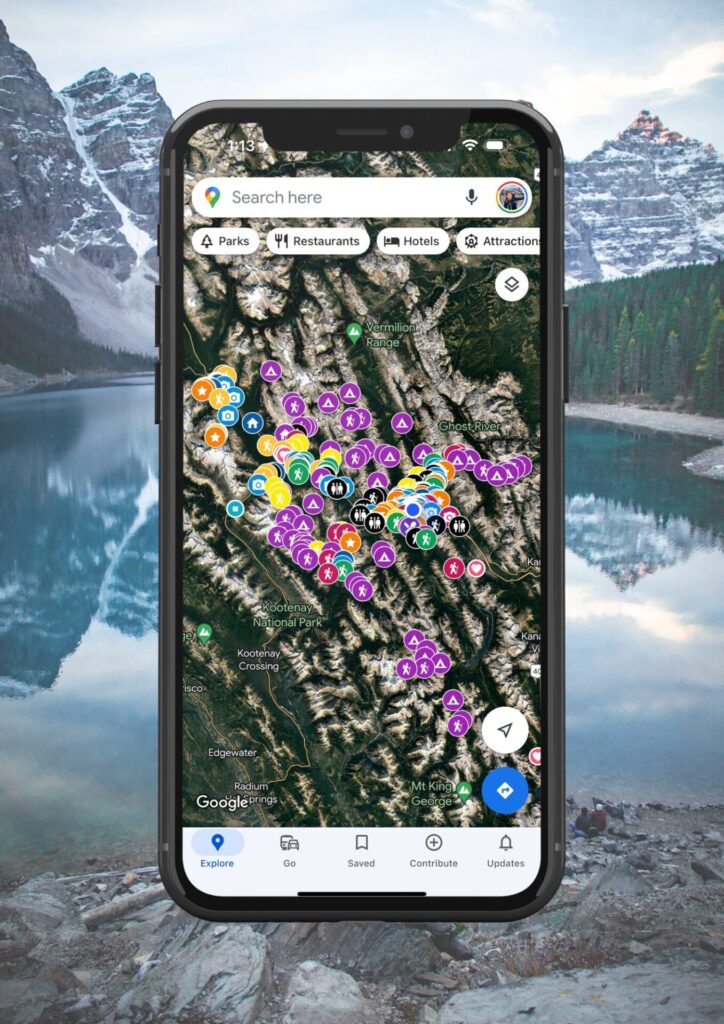
I’ve lived in Banff for years and I’ve now compiled everything I know about the park in this 600+ pin map which I made to help you explore Banff like a local.
The map outlines:
- 100+ hiking trails and backcountry campgrounds
- Every hotel, cabin, and restaurant in the park with ratings, reviews, and booking links
- Unique activities, photo-ops, and blue alpine lakes
- Transit hubs, planning resources, and parking maps
plus plenty of local hidden gems & insider travel tips!
Each pin comes equipped with photos, a description, booking links, and complete guides – designed with the intention of minimizing pre-travel research before your next trip to Banff.
Quick Banff Guide
Parks Pass: You will need a National Park Pass for each day you’re in Banff. Passes can be purchased at the East Parks Gates, the Visitor Centre, any of the campgrounds, or online. If you’ll be in any of Canada’s National Parks for more than 7 days in a 365 day period, an annual Discovery Pass offers a better rate than purchasing individual day passes.
How to get to Banff: fly into Calgary International Airport. From here, rent a car, RV, or take one of the following shuttles to Banff:
- Budget: On-It runs during the summer months and Pop-a-Ride is a ride-share program. You can use my Poparide link to save $5 on your first trip.
- Top private shuttles: Banff Airporter and Brewster.
- Car rental: having access to a car is the best way to travel to/from/within Banff. Here are the best budget car rental options for Canada.
Roam Transit: once you arrive in Banff, use the local transit service as much as possible. There are bus lines within town, plus lines to popular spots like Lake Louise and Johnston Canyon. The bus to Lake Louise should be reserved in advance.
Parking: the best spot to park is the free lot next to the train station. More information about parking in town can be found here and parking fees can be paid here. Bylaw is strict, so ensure you’re following parking rules exactly.
Lodging & Camping: Here’s my guide for hotels in Banff (Organized by Category). If you’re visiting during peak summer (mid June to early September), make your lodging reservations FAR in advance. Front country and backcountry camping reservations must be made on the Parks Canada reservation system. The system typically opens in February and it’s recommended you make reservations then.
Reservations: for activities and restaurants should be made well in advance during summer. Get Your Guide and Viator are popular tour booking platforms whereas OpenTable is used for restaurants.
When to visit: Hiking – July to mid September. Backcountry camping, wildflowers, & water activities – July to August. Fall colours – mid September to early October. Wild ice skating – usually early December. Skiing (best snow), coldest temps & frozen waterfalls – January & February. Northern lights – December to February. Best spring skiing – March to April. Quietest months to visit – April, May, October, and November.
Visiting Moraine Lake or Lake Louise? Read my guide for how to get there with the new road closures. If you want to see Moraine Lake at sunrise, you can book a shuttle here.
Wildlife Safety: 11 ways to stay safe from wildlife, bear safety, & bear basics.
General Canada Travel Tips
Travel Insurance: ALWAYS purchase reliable travel insurance before your trip. This insurance is trusted by backpackers and adventure sport enthusiasts around the world. You can also use my link to receive 5% off SafetyWing policies. Here’s a blog post with more trustworthy travel insurance options you can compare.
Public transit is not common in North America, however every big city has their own local transit system. If you want to venture out of big cities or to any natural spot, plan to rent a car – here are the best budget car rental options in Canada. Trains (Via Rail) are not well connected within the country and are expensive. Hitchhiking is relatively uncommon here, however Poparide is becoming more popular for ride sharing.
Phone: popular providers are Rogers, Telus, and Koodoo. SIM cards can be purchased at the airport, phone stands, or provider storefronts. Canada has some of the most globally expensive phone rates.
Language: English & French (in Quebec).
Currency: Canadian dollars – displayed as “$” or “CAD”. Both cash and card are accepted everywhere.
Visas are typically not needed for stays up to 6 months in Canada.
Tipping culture: You are expected to tip 15-20% minimum on every meal. You are also expected to tip drivers, hair dressers, or anyone providing a “service” to you.
Tax: is not included in the price you see. Each province has their own tax bracket – Alberta 5%, Ontario 13%, British Columbia 12%, etc.
Helpful Banff Blog Posts
- 25+ Epic Lake Louise Hikes
- Step-by-step guide for planning a trip to Banff
- Best Hotels in Banff – Organized by Category
- How to get to Moraine Lake & Lake Louise
- 50+ Things to do in Banff in summer
- 30+ Epic things to do in Banff in winter
- Complete guide to the Icefields Parkway
- 12 Easy Hikes in Banff
Sulphur Mountain Hike
Sulphur Mountain Hike
How to Get to the Sulphur Mountain Trailhead
Sulphur Mountain hike

The Sulphur Mountain trailhead is located in Banff. The Sulphur Mountain trailhead is approximately 1hr 45mins (150kms) from the Calgary International Airport and 1.5hrs (143kms) from Golden.
The Sulphur Mountain parking lot is the upper lot used by the Banff Upper Hot Springs. Keep in mind it fills up fast on weekends, during holidays, and in summer. It’s recommended visitors park at the free parking lot next to the train station in town and take the bus up to the Sulphur Mountain trailhead to avoid parking issues.
The bus route is Line 1 with Roam Transit and fees are $2 per person, per trip. Fees can be paid via the ‘Token Transit‘ app or in exact change upon boarding.
If you’re looking for a place to stay in Banff, I break down the best options by category below.
ps – if you opt to stay at the Rimrock Resort Hotel, you’re within walking distance of the Sulphur Mountain hike.
Connect via socials:
Sign up for emails to receive a 25% discount on my travel maps + occasional updates on new hiking guides & travel resources.
Taylor ♡
Where to Stay in Banff
This post is my detailed breakdown of the best hotels in Banff – all organized by category.
Booking.com- Hostels – Samesun Banff (best location + bar/restaurant on-site), Banff International Hostel, and HI Banff.
- Budget stays – Bow View Lodge and High Country Inn.
- Mid-range stays – Banff Park Lodge, Mount Royal, Elk & Avenue, and the Banff Caribou & spa.
- Luxury stays – Fairmont Banff Springs and the Rimrock Resort.
- Camp – reservation information.
- See all Banff accommodations.
Travellers can also opt to stay in locations near Banff:
- Lake Louise – Fairmont Chateau Lake Louise (luxury), Paradise Lodge & Bungalows (500m from the lake), Lake Louise Inn (value stay), HI Lake Louise (hostel).
- Canmore – Malcolm Hotel (luxury), Stoneridge Mountain Resort (condo suites with fully equipped kitchens), Mountain View Inn (budget), Canmore Downtown Hostel & the Canmore Hostel (party hostel).
- Johnston Canyon – Johnston Canyon Lodge & Bungalows, Castle Mountain Chalets, and HI Castle Mountain Hostel.
- Yoho National Park – Emerald Lake Lodge and Cathedral Mountain Lodge.
- Kootenay National Park – Storm Mountain Lodge & Cabins.
- Kananaskis Country – Mount Engadine Lodge and Kananaskis Mountain Lodge (luxury), Crosswaters Resort (mid-range), and HI Kananaskis Wilderness Hostel (budget).
About the Sulphur Mountain Hike
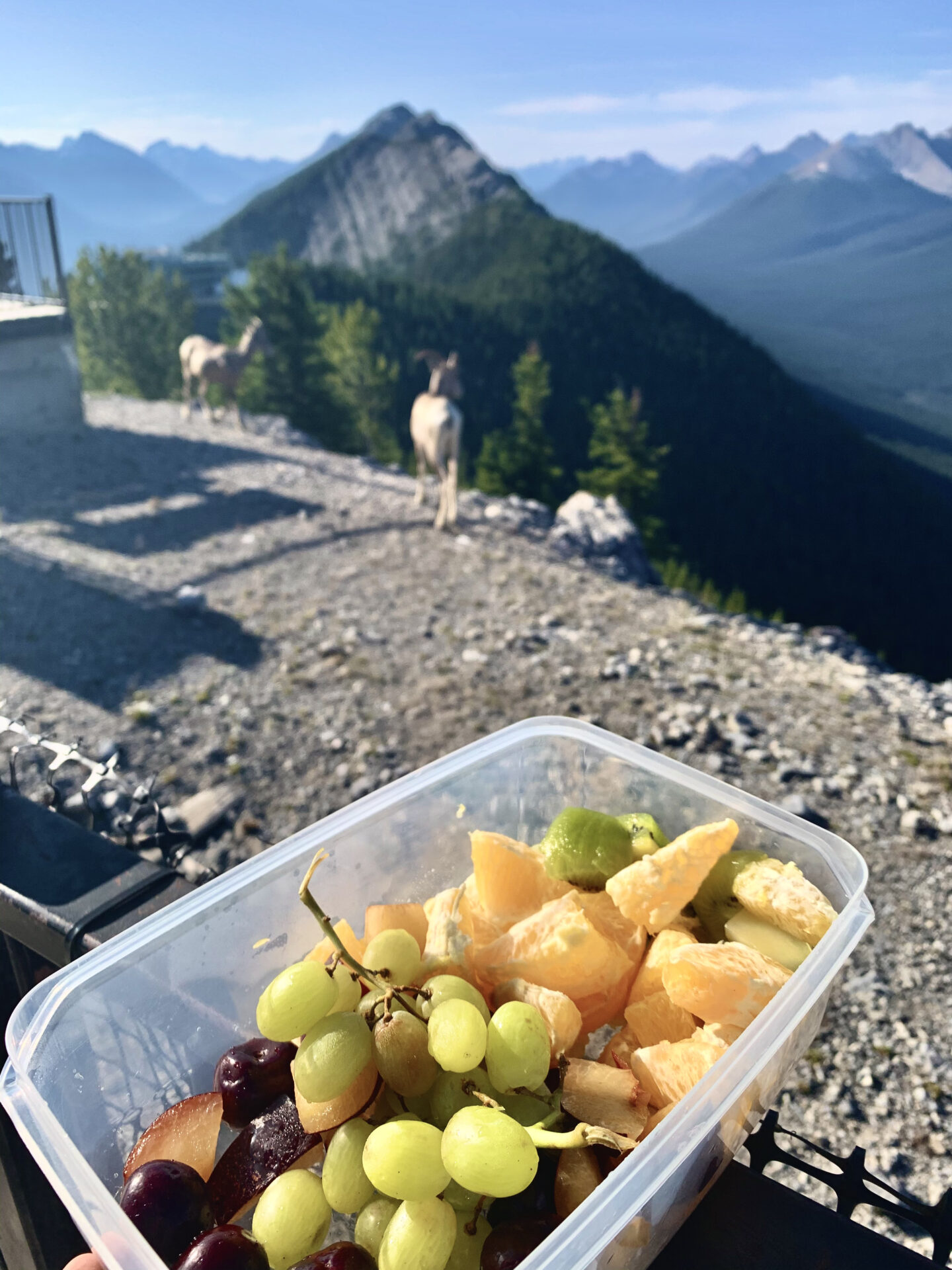
- Distance: 10.9km
- Elevation gain: 756m
- Rated: moderate
- Type of trail: out & back
- Estimated time: 4hrs of active hiking time, but budget more time to explore the gondola facilities
- Bikes and skis are not allowed on the Sulphur Mountain trail
- The Sulphur Mountain hike is suitable for kids and families
- Dogs can hike Sulphur Mountain (as long as they’re leashed)
- Sulphur Mountain can be hiked year round – I go over hiking information for Sulphur Mountain in winter next
- You will have cell service on the Sulphur Mountain trail and at the summit. There’s also free wifi in the gondola building
- On average, the Sulphur Mountain hike takes around 1.5-2hrs on the way up and 1-1.5hrs on the way down
- Hikers CAN utilize the gondola’s facilities. You do not need a gondola ticket to enter the building
Banff’s Sulphur Mountain hike is very busy and easy to follow which makes this a great trail for those looking to try out solo hiking. The Sulphur Mountain hike follows 27 switchbacks over a packed trail surface with minimal tripping hazards like rocks or branches.
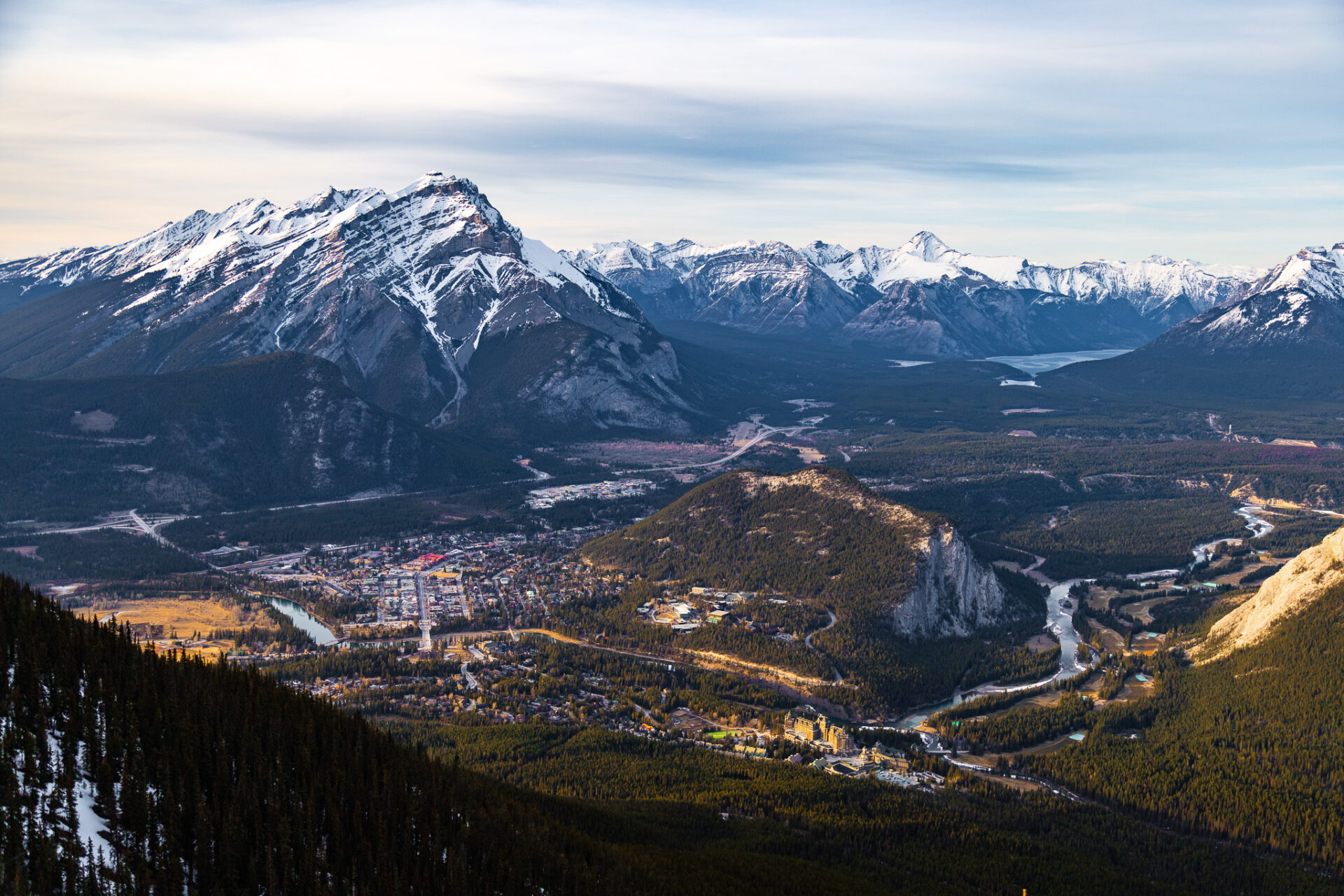
ps – if hiking isn’t quite your thing, you can opt to take the Banff Gondola one-way or roundtrip instead.
The Sulphur Mountain hike is completely engulfed by trees which means you’ll have minimal views until the summit, however when you reach it, the views open up in all directions providing you with epic sights over the town of Banff and mountains like the famous Cascade and Rundle.
Please stay on trail and do not take “shortcuts” when completing the Sulphur Mountain hike. This area sees thousands of hikers annually and staying on the switchbacks helps preserve the landscape.
Alternate Trail: The Sulphur Mountain Westside Trail ventures up the backside of the mountain with Cave & Basin as the trailhead. This route is longer with more elevation, but sees significantly less hikers and has better views.
For the more advanced hikers reading this blog post – at the top of Sulphur Mountain you can continue on to the Sulphur Mountain Traverse Route which is a fun and beautiful extension of the Sulphur Mountain hike to the “true” Sulphur summit. It requires route finding and scrambling – not beginner friendly.
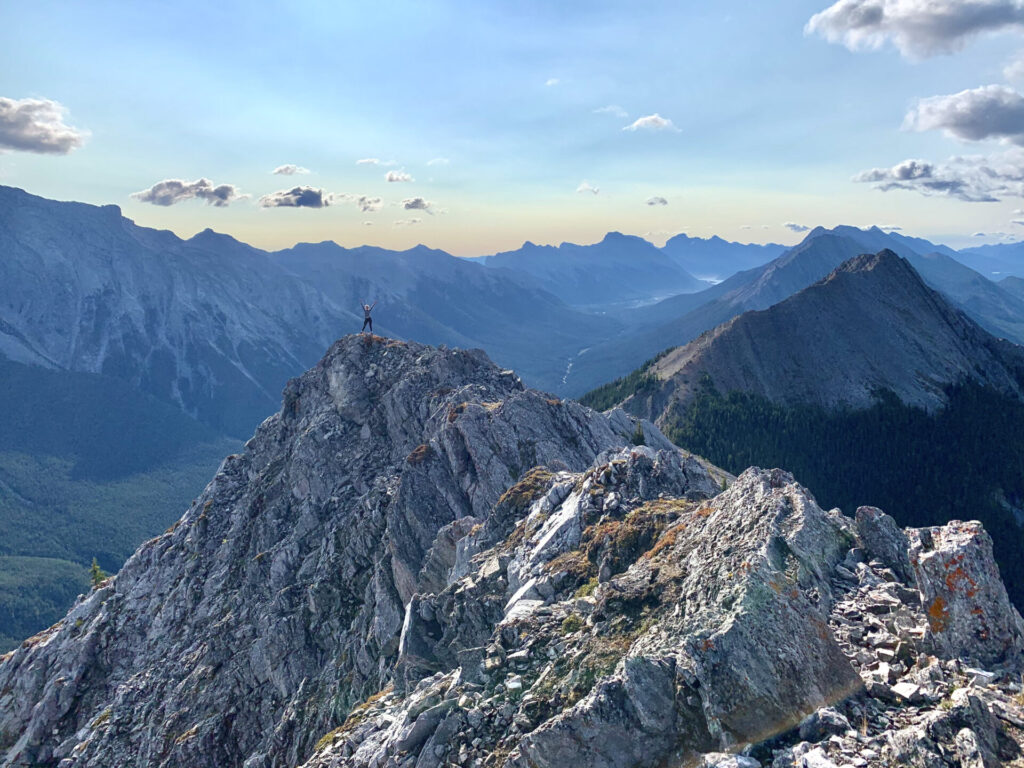
Sulphur Mountain Hike in Winter

Sulphur Mountain is one of the best hikes in Banff if you’re new to winter hiking. Like I previously mentioned the trail is well trafficked which means you’ll pass many people on the way up and down. The vast amount of people on the trail means it’s almost always packed down and you won’t need to wear snowshoes – unless you’re hiking up after a fresh snowfall.
Spikes are always recommended if you’re hiking Sulphur Mountain in winter as they’ll help you maintain traction on the slippery, snowy surface. Poles are also helpful for maintaining balance. Snow can be found on the Sulphur Mountain trail until June, so you’ll need to keep this in mind when you pack for your Sulphur Mountain hike.
I’ve linked all my go-to winter hiking equipment above.
There’s no real avalanche risk on Sulphur Mountain as long as you stay on the trail, however if you’re interested you can find more information about the avalanche report here.
If you plan on hiking the backside of Sulphur Mountain in winter, you’ll be exposed to avalanche terrain and waist deep snow.
Top Tours & Excursions in Banff
Banff Gondola – epic views from the top of Sulphur Mountain.
Banff Hop on Hop off – explore the park at your own pace.
Lake Minnewanka Cruise – take a scenic boat ride down the largest lake in Banff.
Moraine Lake sunrise – chartered bus to see alpenglow on Canada’s most beautiful lake.
Norquay via ferrata – epic beginner friendly climbing route across iron bars on Mt Norquay.
Sunshine Meadows Gondola – find wild alpine flowers and hike around pristine alpine lakes.
Sulphur Mountain hike is great for dogs
About the Banff Gondola
Sulphur Mountain is special as it’s one of the only hikes in Canada with mountaintop facilities. The Banff Gondola offers multiple restaurants, an interpretive centre, a viewing deck with fire pits, and a boardwalk over to the neighbouring Sanson’s Peak.



The following are the key takeaways for the Banff Gondola. If you’re looking to book a gondola ride, you can do so here.
- Dining – the Banff Gondola offers fine dining at Sky Bistro (ensure you have reservations), casual dining at Northern Lights, and grab-n-go foods at Castle Mountain Coffee Co. In the summer months you can visit the Peak Patio which is Banff’s highest patio.
- Hiking – there’s a wooden boardwalk that goes over to Sanson’s Peak. The walk takes round 10-15 minutes one-way and does not require “proper” hiking gear or sturdy footwear to complete.
- Indoor Entertainment – an interpretive centre with information pertaining to local wildlife and geography, a theatre, and a gift shop.
- Events: the Banff Gondola offers various seasonal events like a winter lights display, live music, and more.
- One-way tickets: If you’re looking to hike Sulphur Mountain and take the Banff Gondola down, one-way tickets are available for purchase.
I recommend budgeting 1-2 hours to explore to Sulphur Mountain Gondola facilities. Budget slightly more if you’re planning to have a meal at one of the restaurants.
Hiking Sulphur Mountain

The Sulphur Mountain hike starts out at the trailhead by the Banff Upper Hot Springs. Right away the trail gains elevation and it does not stop until you reach the summit. Although not overly steep, the continuous elevation gain can be tiring depending on your fitness level and previous hiking experience.
The 27 switchbacks and tree coverage makes it tricky to know how far you’ve hiked, however when you see gondola cabins passing overhead you’ve made it about halfway.
Closer to the top you’ll hear flowing water which is coming from a small waterfall. There’s a side-trail which brings you to a viewpoint of it, however I’d only suggest taking this side-trail once the snow is gone. Walking over this unstable snow means you could fall through to a hollow cavity underneath the surface.
Keep in mind there are various forms of wildlife on Sulphur Mountain like bighorn sheep, deer, bears, etc. Hikers are encouraged to bring bear spray.
As soon as you reach the Sulphur Mountain summit you can access the bathrooms, water refill station (located on the 2nd floor), and restaurants. Typically hikers reach the summit in 1.5-2hrs. From here hikers can continue on the boardwalk to reach Sanson’s Peak.
Sulphur Mountain hike – is the Sulphur mountain hike hard
Canadian Rockies Hiking Tips
Hiking in the Canadian Rockies is much more advanced than hiking in other regions of Canada and around the world. Here you need to factor in high elevations, extreme weather, potentially dangerous wildlife, and vast wilderness.
Guides for hikes in: Banff | Jasper | Kananaskis | Kootenay | Waterton | Yoho
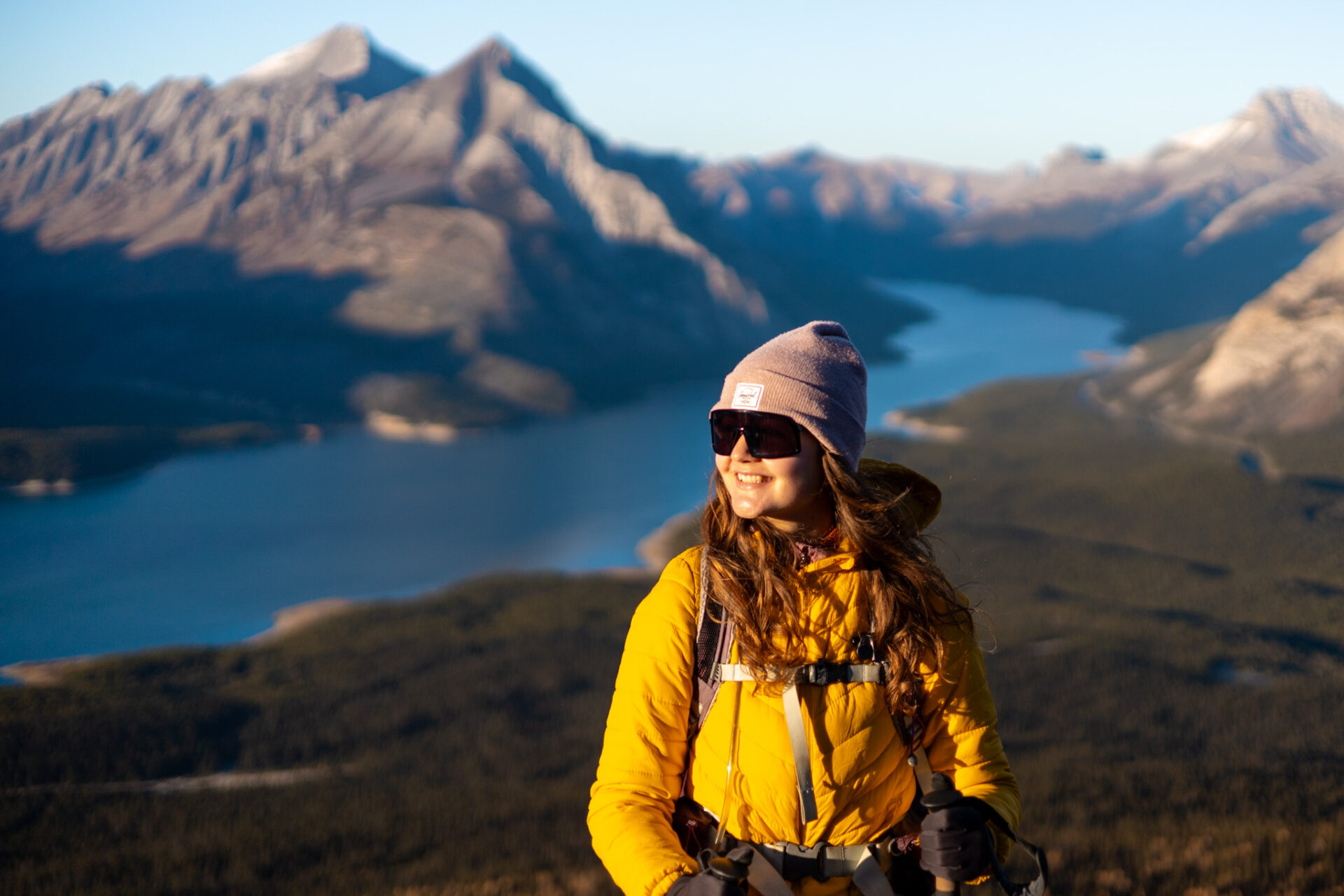
Approach: if you’re new to hiking in the Rockies, take a conservative approach and know it will likely take you longer than you think to complete a trail. Start out with smaller hikes and gradually work your way up when it comes to elevation, exposure, and remoteness. Additionally, ensure you have more than enough daylight to return to the trailhead. Keep in mind you may experience some form of altitude sickness if you’re new to the mountains.
Best Time of Year: you can hike year round in the Rockies however summer (July-early September) is best for any kind of summit hike, Larch season (when the trees turn yellow) generally happens the last week of September to the first week of October, and spring (May-June) is best for lower elevation hikes that do not cross avalanche terrain.
- Hiking in winter? Check the avalanche bulletin, take an avalanche safety course, stick to conservative terrain, hike in groups, and don’t take risks. If you’re unsure, don’t go as the Canadian Rockies can be volatile in the snow. I go off local knowledge and use a combination of the slope angle tool on Caltopo and Google Maps satellite view to survey terrain before hiking.
- My favourite weather tool for the Rockies is SpotWx.
Pets: Generally dogs are allowed on all trails in the Rockies unless otherwise stated. Dogs must remain leashed at all times.
Safety: Always tell someone (or better yet, multiple people) where you’re going and your estimated return time (check-in). Additionally, ensure you tell your safety contacts when you return (check out).
- Carry a satellite communication device as there’s typically no cell service on-trail in the Rockies. The Garmin InReach Mini is a fan favourite, however newer iPhones (14+) have a satellite feature.
What to Bring: always carry more water and snacks than you need. I always have a thin pair of gloves, sunglasses, and sun protection with me too. Blister care, tissues, and a hat are always good to have on hand. Remember, whatever you pack in, you must pack out.
What to Wear: The key is to dress in layers so you can add or take away clothing on a need basis. A combination of wool/synthetic fibres is the best material and you’ll always want to bring an extra layer for warmth (even in summer). You’ll want sturdy footwear (I prefer boots over shoes), and a water/windproof jacket as weather here is unpredictable.
Wildlife: you’ll come across many animals in the Canadian Rockies (elk, moose, deer, etc). The best thing to do is hike in groups of 4+, make noise, give all animals space, and carry bear spray (learn how to use it, too). Here are bear safety tips from Parks Canada.
Maps: I use the Alltrails+ membership which allows users to download their maps and track their location via satellite even when they’re out of service. Alltrails is also currently the best resource to find hikes in the Canadian Rockies.
Canadian Rockies Camping Tips
Camping in the Rockies takes place in two forms – front country and backcountry. Front country camping is in an established campground with amenities like bathrooms, parking, and staff. Backcountry camping is when you hike into your campsite.
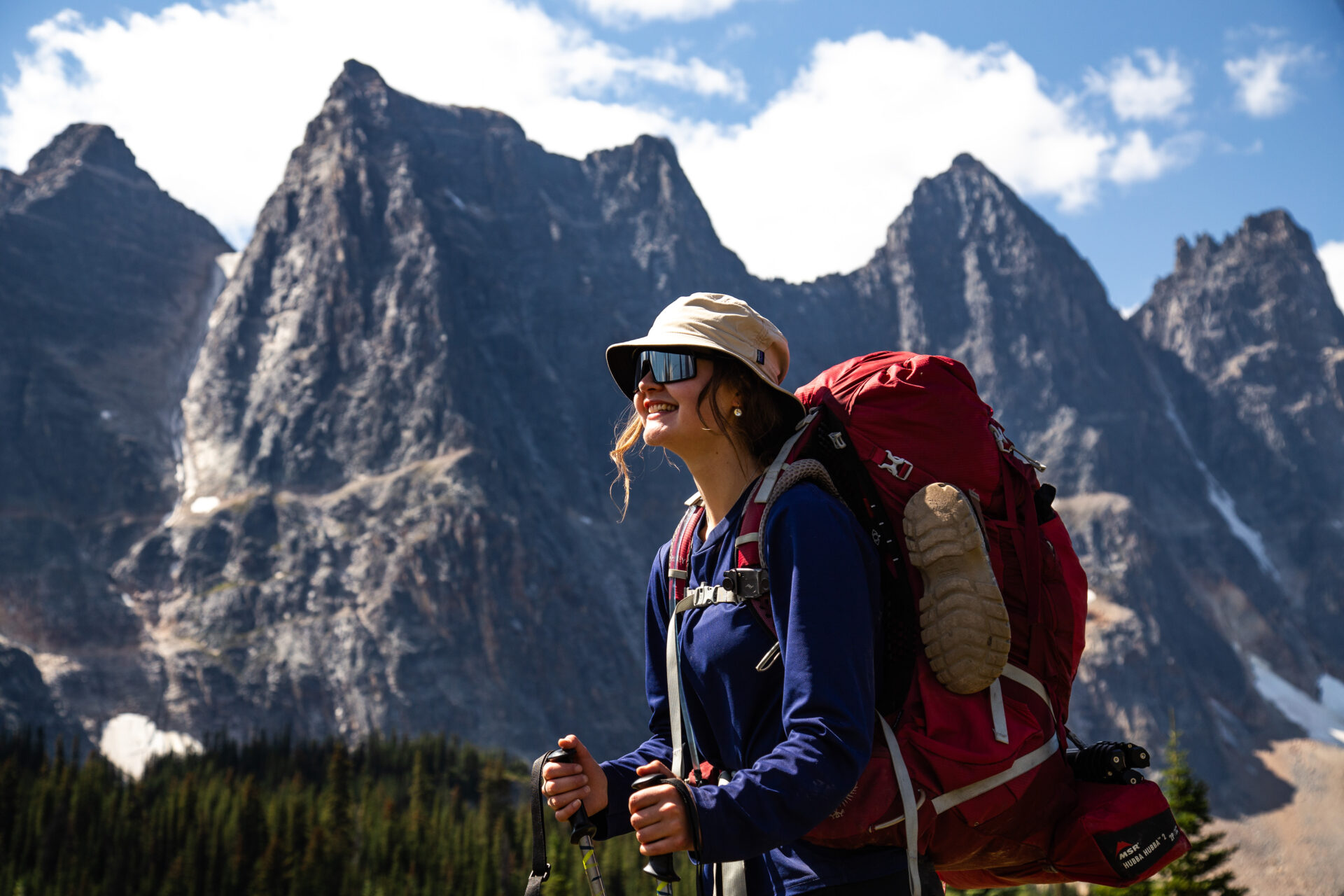
Unless you’re on some form of public land – random camping and free car camping is not permitted in the Canadian Rockies. If you do plan to “free” camp in the designated areas, you must purchase the Public Lands Camping Pass.
Camping Reservations: must be made far in advance, especially for popular sites in the National Parks. Reservation day (when booking goes live) typically occurs in February. Try to book your front country and backcountry reservations then as sites will book out instantly for the entire summer.
- Front + backcountry National Park camping reservations can be made here and Kananaskis reservations can be made here: backcountry | front country.
- Can’t get a reservation? Sign up for cancellation notifications via Schnerp. I use this resource frequently and have found cancellations at even the most popular spots in the Rockies like Lake O’Hara.
When to Camp: Camping can be done year round in some locations, however many campgrounds close for the winter. If you’re hoping to backcountry camp, July-August is the best time of year for warmer and more stable weather. Keep in mind, temperatures are typically very cold at night even during peak summer.
Backcountry Campgrounds: generally have a drop toilet (bring your own TP), picnic tables, tent pads, and bear facilities (lockers or a hanging device). Two items I don’t go backcountry without are dry bags for food storage and Stasher Bags for cooking, garbage, etc.
Hut Camping: the Alpine Club of Canada has established alpine huts scattered around the Rockies and beyond. These huts must be booked in advance and cater to backcountry skiers, hikers, and climbers.
Packing advice and my personal gear recommendations can be found in my Backcountry Gear Guide.
Sulphur Mountain Hike
Recommended Hiking Gear for the Rockies
Below are my personal recommendations and favourite products for Rockies specific hiking gear.
If you’re after a more extensive gear breakdown, check out this post.
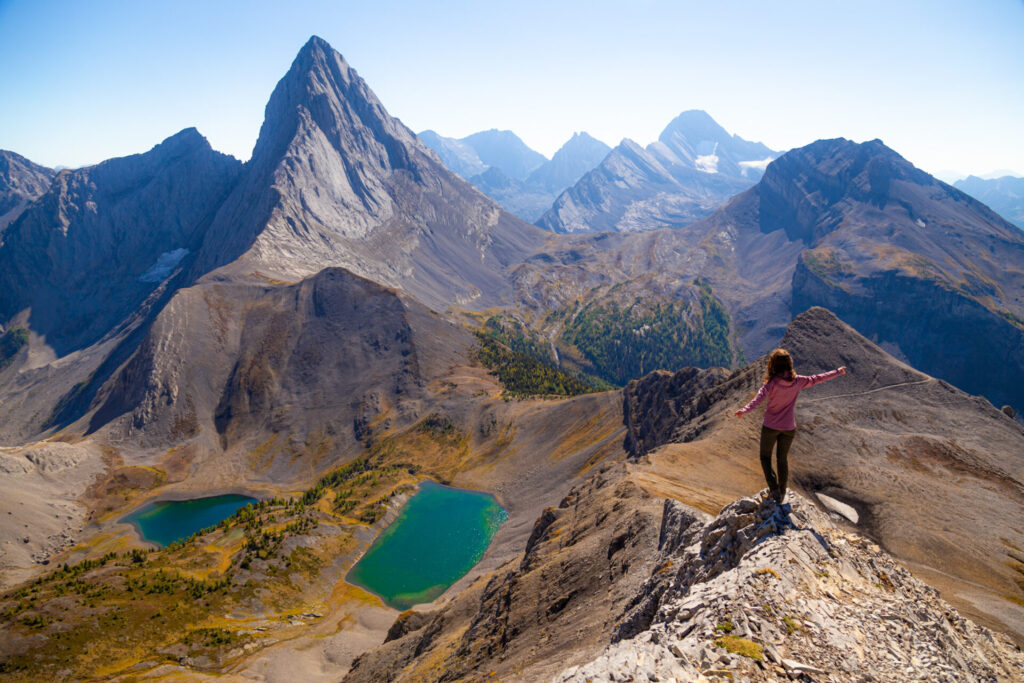
Backpack: I prefer a smaller 24L pack for shorter day hikes and a 36L bag for longer day hikes + light overnighters. I’ve been using the backpacks below for years and love all the features and durability they offer.
- For women: Osprey Sirrus 24L & Osprey Sirrus 36L
- For men: Osprey Stratos 24L & Osprey Stratos 36L
Hydration: I use the 3L Hydrapak to carry water. A 2L or 3L reservoir is typically the perfect size for any length of day hike. You can also bring lightweight aquatabs if you need to clean water on-the-go.
Footwear: I currently use the Scarpa Kailesh (men’s version) and full cushion crew Smartwool socks.
Safety: carry a communication device. The Garmin Inreach Mini is a fan favourite for its small size and price point.
I also always carry hiking poles (no need to purchase fancy hiking poles), a hat, and an extra layer.
Looking for my backcountry gear recommendations? Check out this post.
Rockies Hiking Gear: Winter
If you’re planning to hike the Rockies in winter, you’ll need to add a few more items to your gear arsenal. The below are my personal favourites.

Spikes: I love Hillsound’s trail crampon which provide killer traction and long-lasting durability.
Snowshoes: I use TSL’s sustainable Symbioz Hyperflex snowshoe, however any snowshoe from TSL is top of the line. This one is their midrange models which offers similar features at a light weight and better price point.
Gaiters: this is my top pick for gaiters which are great for keeping water and snow out of your boots. If you’re on a budget, these ones are a little more cost effective and have plenty of great reviews.
Warmth: I struggle with Raynaud’s disease and use Aurora Heat’s reusable fur hand + ultra foot warmers which have made a massive difference for both winter hiking and skiing.
Sulphur Mountain hike
Downloadable Banff Map

I’ve lived in Banff for years and I’ve now compiled everything I know about the park in this 600+ pin map which I made to help you explore Banff like a local.
The map outlines:
- 100+ hiking trails and backcountry campgrounds
- Every hotel, cabin, and restaurant in the park with ratings, reviews, and booking links
- Unique activities, photo-ops, and blue alpine lakes
- Transit hubs, planning resources, and parking maps
plus plenty of local hidden gems & insider travel tips!
Each pin comes equipped with photos, a description, booking links, and complete guides – designed with the intention of minimizing pre-travel research before your next trip to Banff.
Sulphur Mountain hike
Happy adventuring!
Taylor ♡
Like This Post?
Share with friends or save it for later!
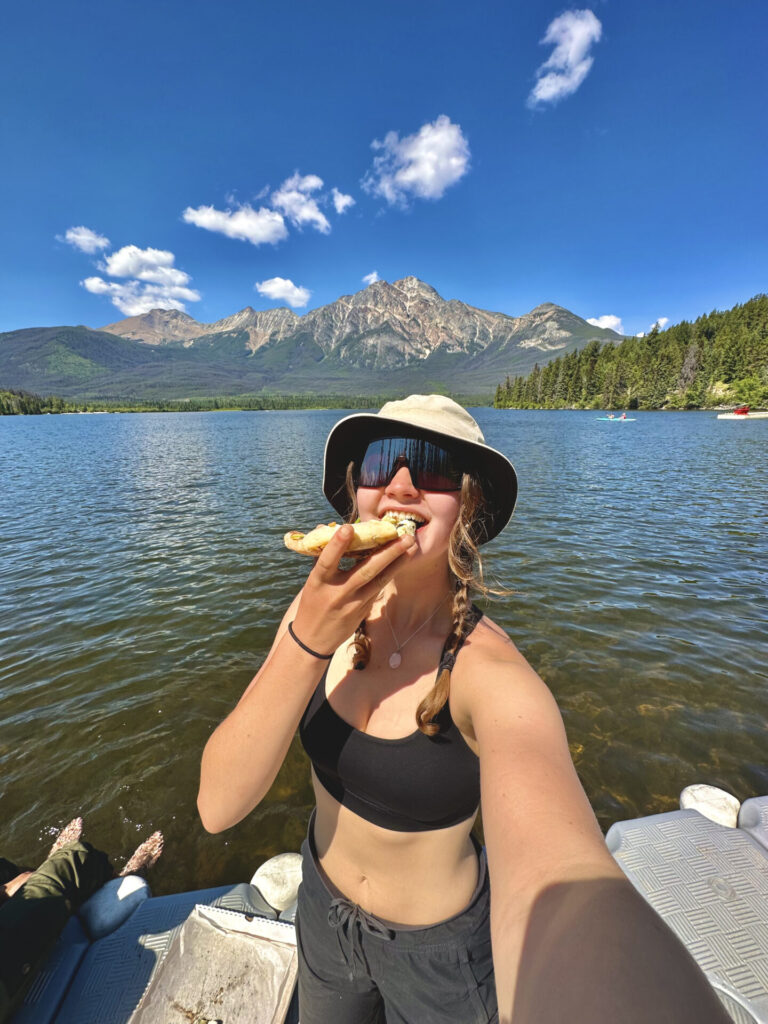
About The Author
HI, I’m Taylor – the voice behind The Holistic Backpacker.
After moving to Banff National Park in 2020 I became an outdoor adventure enthusiast and vowed to never stop exploring.
I now spend my days travelling the world, climbing mountains, and spending nights under the stars in the Canadian Rockies backcountry.
I created The Holistic Backpacker so I could share my adventures and help connect people like you with the same amazing experiences.


